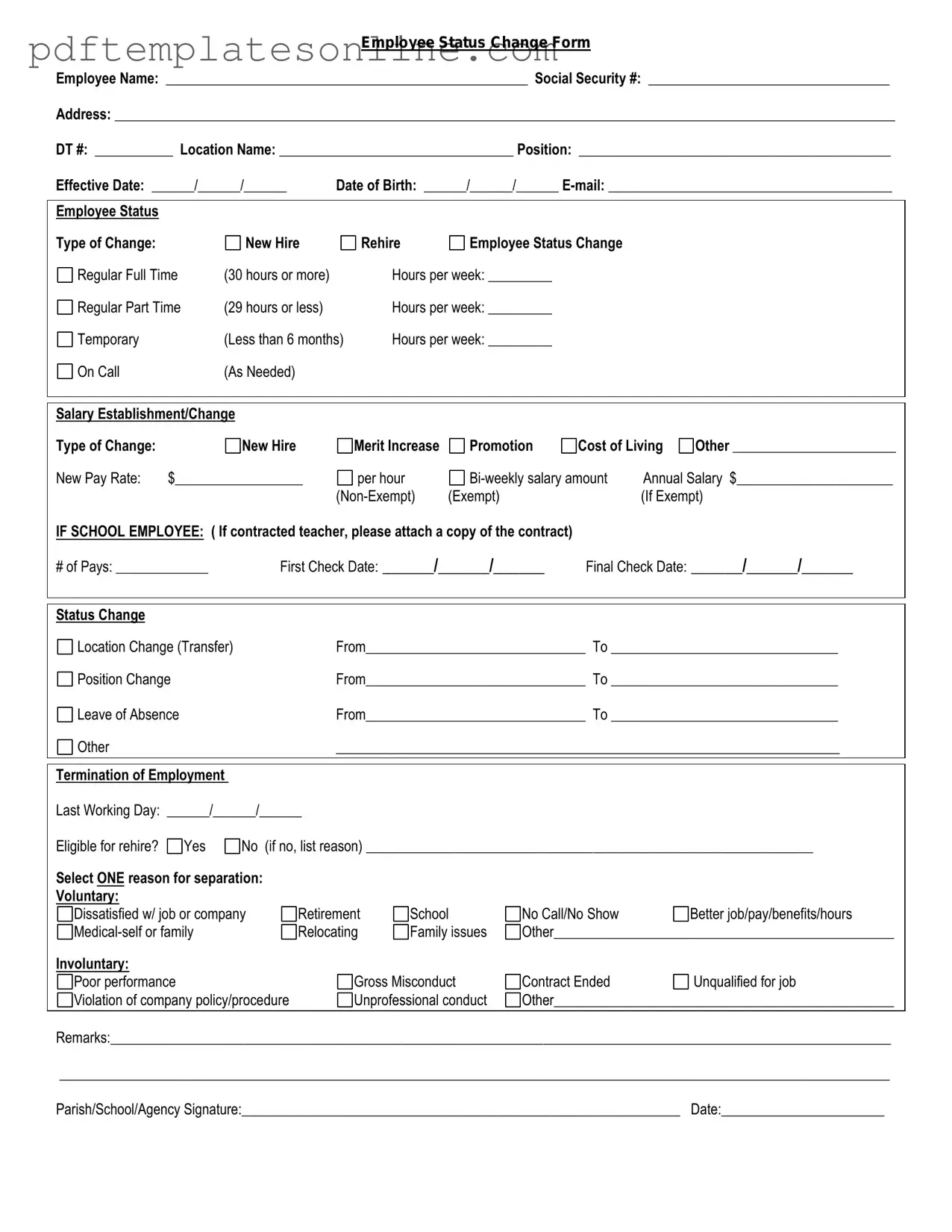Blank Employee Status Change Form
The Employee Status Change form is a crucial document that allows employers to officially record changes in an employee's status, such as promotions, transfers, or terminations. This form ensures that all necessary updates are communicated clearly within the organization. Proper use of this form helps maintain accurate employee records and supports effective human resource management.
Access Employee Status Change Editor Now
